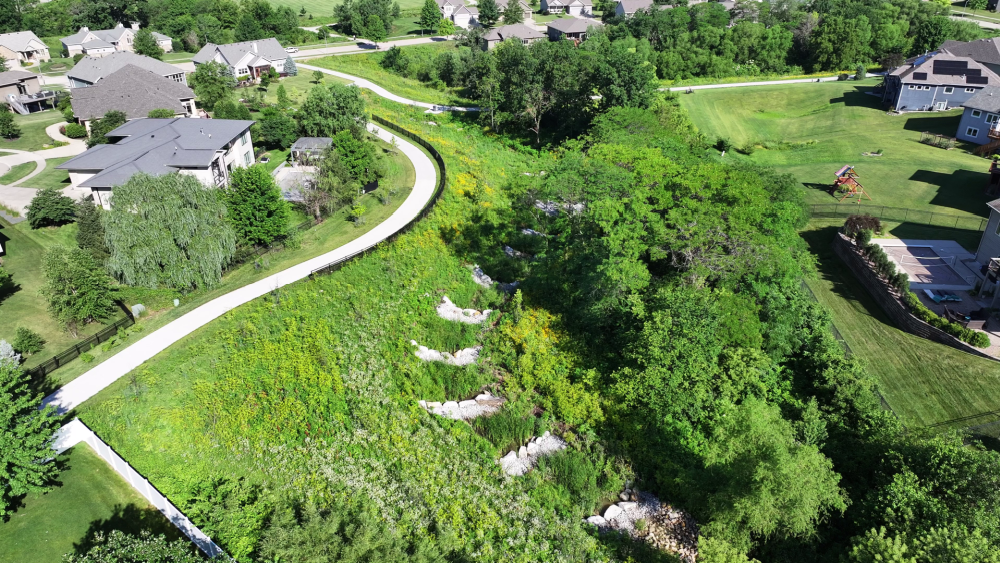Regenerative stormwater conveyance (RSC) is an innovative approach to managing stormwater runoff that mimics natural stream processes through a series of engineered step-pools and riffles. These systems consist of carefully designed pools connected by cobble weirs and boulder cascades, all underlain by a specialized sand/woodchip media bed that promotes infiltration and pollutant removal. Unlike conventional drainage systems that rapidly channel water away through pipes or concrete channels, RSCs work with nature to slow water flow, allowing for vegetation growth, sediment capture, and natural filtration. Originally developed to stabilize eroded channels and ravines, RSCs have evolved to address a wide range of stormwater management challenges in both new developments and retrofitted systems.
The benefits of RSC systems extend beyond basic stormwater control to provide multiple ecological and community advantages. By slowing water flow through the system, RSCs significantly reduce erosion, promote infiltration into groundwater, and effectively filter pollutants through physical, chemical, and biological processes. During smaller rain events, much of the runoff infiltrates directly into the media bed, while larger storms are managed through controlled overflow between pools. This design not only improves water quality and reduces downstream flooding but also creates diverse wildlife habitat, enhances aesthetic value, and provides community educational opportunities about natural water systems.
Key components
Entry pool: An initial pool that captures incoming stormwater, often incorporating pre-treatment features to remove sediment and debris before water continues through the system.
Step-pool sequence: A series of constructed pools at different elevations connected by riffle sections that slow water flow, promote infiltration, and create habitat diversity.
Cobble weirs: Parabolic-shaped structures made of 6-inch diameter cobbles that control water flow between pools, spreading runoff and providing energy dissipation.
Boulder cascades: Large stones arranged to create small waterfalls between pools, further slowing water flow and adding oxygen to the system.
Sand/woodchip media bed: A specialized filtration layer beneath the entire system that supports infiltration, pollutant removal, and microbial processing of nutrients.
Native vegetation: Carefully selected plants that stabilize the system, enhance aesthetics, provide wildlife habitat, and assist with pollutant uptake.
Microtopography: Intentional variations in terrain within the conveyance channel that mimic natural stream features, slowing water flow and creating diverse micro-habitats.
Outlet pool: The final pool in the sequence that connects the RSC to the receiving water body, designed to dissipate energy and release water in a controlled manner that prevents erosion of the discharge point.

